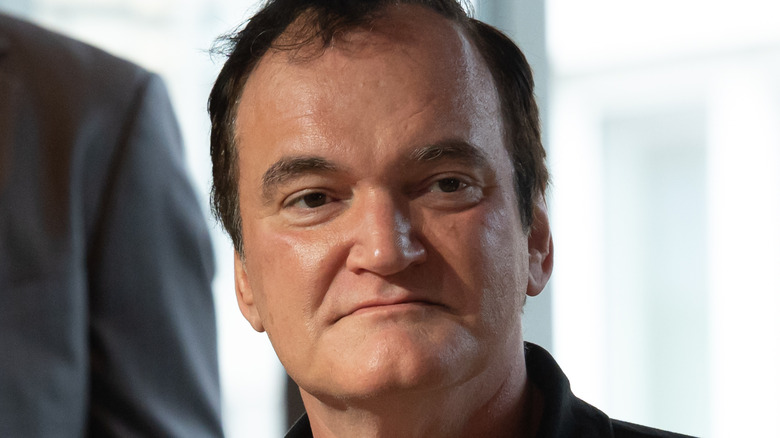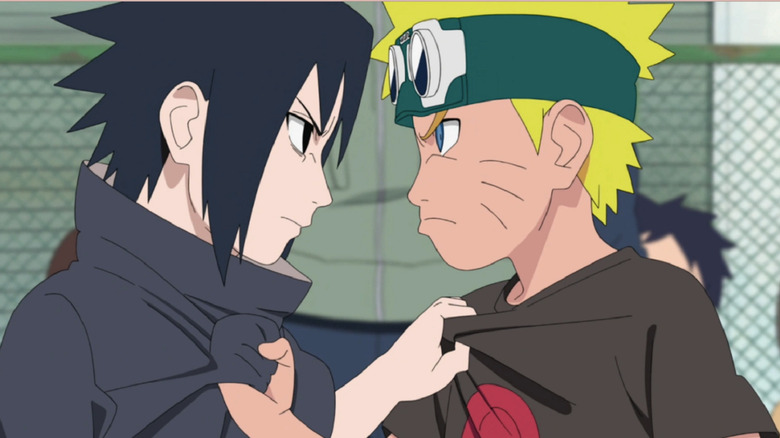Quentin Tarantino's Films Helped Shape The Action In Naruto
Every artist has other artists who serve as references, inspiration, or a source of ideas. Art, especially nowadays, does not exist in a vacuum; it often is partaking in a silent dialogue with other artwork that has fueled its conception. One of Masashi Kishimoto's influences when coming up with certain aspects of his unbelievably successful long-running series "Naruto" was Akira Toriyama's "Dragon Ball," to which Kishimoto makes multiple references to the older series. In addition to pop culture, the manga creator drew inspiration from folktales to develop some of his characters.
Another source of Kishimoto's inspiration, which is less associated with his work, comes from a multifaceted filmmaker who has seen incredible recognition over the decades of his activity within the industry. While not the most prolific of directors, Quentin Tarantino's films have certainly served and will keep serving as artistic influences over other storytellers. To name a few, directors like Ennio Morricone, Akira Kurosawa, and Samuel Fuller have been acknowledged and credited by Tarantino as filmmakers whose works influenced him. (per Vulture)
As part of the domino effect that is the flow of artistic inspiration, Kishimoto, like other artists like him, has been influenced by Tarantino when thinking up certain scenes, sequences, and individual panels in his ninja-centric manga.
Uzumaki Unchained
In a 2008 interview with the Los Angeles Times, Kishimoto revealed some of his influences. The mangaka explained that, as he frequently enjoys watching movies, he often picks apart certain scenes and tries to emulate specific techniques when he is absorbed in drawing.
After mentioning Takeshi Kitano – the Japanese director behind movies like "Hana-bi" (1997), "Dolls" (2002), and "Zatoichi" (2003) – Kishimoto goes on to talk about Tarantino and how his distinguished filmography inspired him.
Kishimoto said, "I like the way Quentin Tarantino creates a scene using a series of close-ups or showing very cool images of a person or people walking on some ordinary street in slow motion. I wish I could achieve that kind of slow-motion effect in manga, but it's rather difficult to draw; the only things we can play with are tones of black and white."
Indeed, besides being known for his bloody action scenes and his quotable snappy dialogue, which are things that happen in every Tarantino movie, the renowned American director is also highly recognizable for his extreme close-ups, here stylishly compiled by Jacob T. Swinney.
Kishimoto wrapped up his interview by gratefully acknowledging the many influences he had over the years. "All the people I was influenced by have been very successful in other countries, which may be why it was easier for my work to be accepted there. 'Naruto' owes a lot to those artists who won acceptance and popularity overseas."

